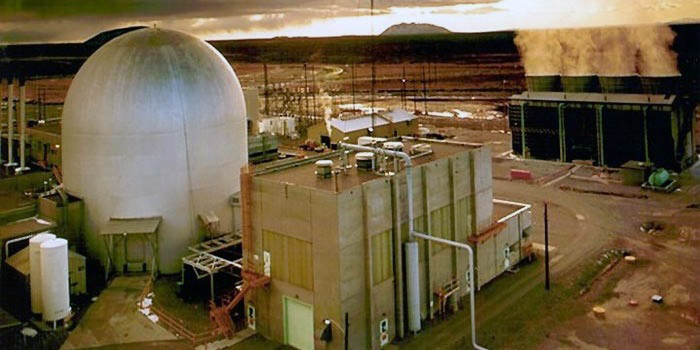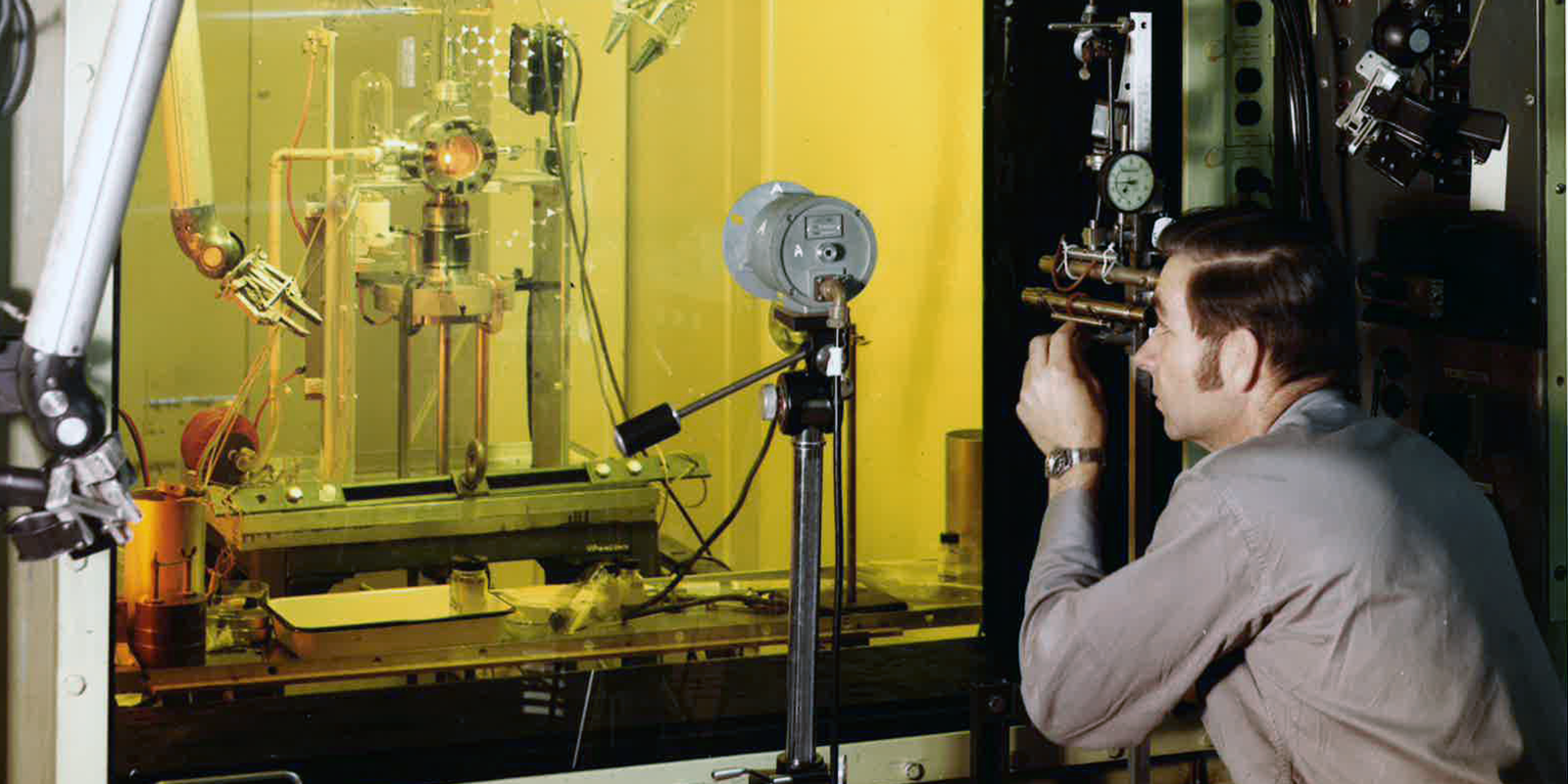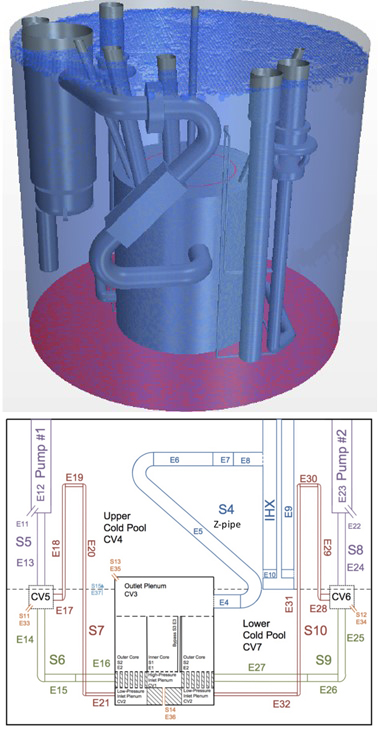Significant interdependence of neutronic, thermo-fluids, fuel and structural response pose unique multi-physics simulation challenges for fast reactors. Validation of predictive capabilities of fast reactor codes and methods using data from past U.S. testing experience in EBR-II, FFTF, and TREAT, other international reactors like MONJU, Phenix, CEFR, and CABRI, and other test facilities in the U.S. and abroad is crucial to support design and licensing of fast reactor concepts pursued by U.S. industry.
This technical area supports this need via archival of rich U.S. fast reactor operation and testing legacy, and conducting benchmark analyses to verify and validate fast reactor design and safety analysis codes/methods in support of industry and NRC. Predominantly relying on data from integral and separate effect tests in various facilities, it aims to expand the validation basis of DOE’s fast reactor design and analyses software as well as the emerging new capabilities being developed under DOE-NE’s NEAMS program.
Focus Areas
Fast Reactor Databases
The preservation of past U.S. fast reactor knowledge was identified as a key priority in the DOE-NE’s Sodium Fast Reactor Safety and Licensing Research Plan. This focus area supports development, maintenance, and quality assurance of fast reactor databases at Argonne, PNNL, and SNL to address this priority:
- FIPD: EBR-II Fuels Irradiation and Physics Database: Comprehensive database for fuel design, irradiation history, depletion calculations, profilometry scans, and PIE results.
- NaSCoRD: Sodium Component Reliability Database: Based mainly on EBR-II and FFTF operation experience.
- ETTD: EBR-II Transient Test Database: Measurements from ~80 experiments from the comprehensive shutdown heat removal, balance of plant, and inherent control tests.
- TREXR: TREAT Experimental Relational Database: Data from ~800 transient fuel tests including the M-series metallic fuel transient overpower tests.
- OPTD: Out-of-Pile Transient Database (furnace tests): Data from Fuel Behavior Testing Apparatus (FBTA) and Whole Pin Furnace (WPF) tests to characterize margin to clad failure for metallic SFR fuel during slow transients.
- FFTF Passive Safety Testing and Metallic Fuel Irradiation Databases: Measurements from 13 unprotected loss-of-flow transient tests, including core restraint system and the GEM response. Document archive metal fuel irradiation experiments.
Ongoing work includes:
- Continued development of the metal fuel irradiation and out-of-pile transient testing databases to support fuel qualification for ongoing industry demonstration projects
- Providing qualified data needed for validation of the state-of-the-art codes and advanced methods for design and analysis of fast reactors through development of benchmark specifications
- Quality Assurance Program Plan (QAPP) development/implementation for select data sets in OPTD/FIPD
- Development of ZPPR Test Database
Verification and Validation
This focus area supports:
- Participation in V&V projects based on data from legacy and new separate effect and integral tests, and
- Maintenance of, and software quality assurance for, fast reactor design and safety analysis codes:
- Argonne Reactor Computation (ARC) codes: MC2-3, DIF3D/Variant, REBUS, PERSENT
- SAS4A/SASSYS-1
- SRT
- NUBOW
Ongoing V&V projects/activities include:
- IAEA Coordinated Research Projects:
- Completion of multiyear FFTF and CEFR international benchmarks
- Participation in new NACIE benchmark for LBE natural circulation in a wire-wrapped fast reactor fuel assembly based on tests being conducted in Italy
- Benchmark activities under the U.S.-Japan bilateral on the core radial expansion, mechanistic source term assessment, fast reactor fuel failure, and sodium fire modeling
- Source term software validation for release, transport, and retention of radionuclides in SFRs and microreactors
- Analysis of wire wrapped SFR fuel assembly blockage tests at TAMU
- Participation in a new OECD/NEA’s SEFOR benchmark for validation of Doppler feedback modeling capabilities
- Participation in a new EU study on assessment of metallic fuel in a reference European fast reactor concept


